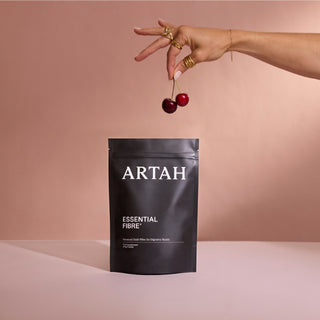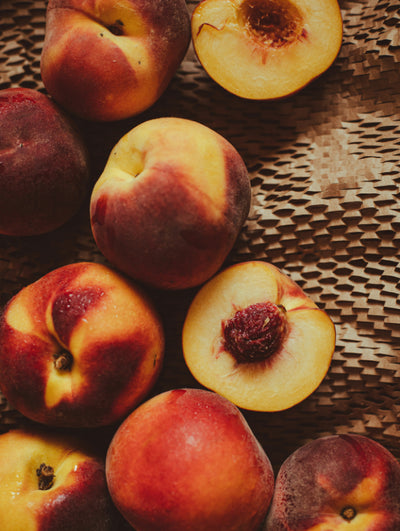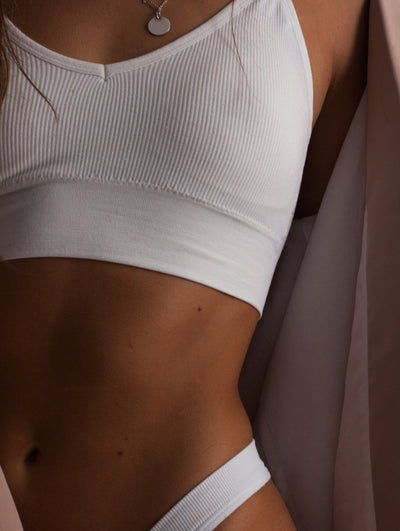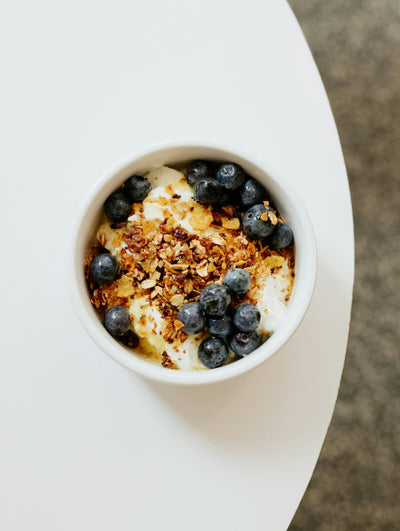Cold Plunging/Cold Exposure
Other than the willingness to confront a little discomfort, cold plunging, or cold exposure, is one of the easiest biohacks to implement. Cold exposure can be anything from cold (or ice) baths, cold showers, contrast showers, or cold-water swimming (safely, of course), and has various benefits. Studies show that cold exposure triggers the production of brown adipose tissue, commonly known as 'good fat,' which generates heat by burning energy. (1) This process, known as thermogenesis, enhances metabolic health by improving insulin sensitivity. (2) It also has a role in longevity; cold exposure stimulates the activation of heat shock proteins and stimulates autophagy, a process that helps clears out damaged or dysfunctional cells and tissues, (3) and it has been associated with lower levels of inflammation. (4)
Breathwork
If you’ve been a part of our community for a while now, you’ll know that we love breathwork. Our breath is an indispensable tool in managing stress and stress related dysfunction because of its ability to reduce sympathetic nervous system activity (our stressed-out state), promote the parasympathetic nervous system (our restful state), and more. There are various techniques to choose from (like box breathing, alternate nostril breathing, diaphragmatic breathing, and the Wim Hof Method), which offer a range of benefits, including stress reduction and heightened mental clarity. (5) In fact, breathwork has been shown to improve symptoms of anxiety, depression, trauma, addiction, obsessions, compulsions, and inattention. (6) It’s big in the world of longevity because it also influences many of the processes that over time, deplete NAD+, including sleep, chronic stress, and inflammation. It has also been shown to increase anti-inflammatory compounds and reduce pro-inflammatory cytokines, making it an effective tool to target inflammation and the resulting loss of NAD+.
Intermittent Fasting
Intermittent fasting (IF), characterised by alternating periods of eating and fasting, has emerged as a popular dietary strategy for longevity, and has been shown to enhance glucose regulation, elicit anti-inflammatory effects, and improve certain cardiometabolic factors. (7) Studies reveal that during fasting, autophagy, (the cellular cleaning process), is triggered which offers protection against cell damage6. This safeguarding is thought to extend to neuroprotective effects, potentially reducing the risk of age-related neurodegenerative diseases like Alzheimer's and Parkinson's7. It also gives the microbiome some much needed time to rest and rejuvenate, which supports microbial diversity, SCFA production and more. When it comes to intermittent fasting, the dosage and application is important. If you’re new to the world if IF, here’s how you can start.
- If you’re not already leaving 12 hours between the last and first meal of the day, start here. Once you hit 12 hours, you can start to extend it to 14 hours a few days per week.
- Once this feels comfortable, try implementing one or two 16-hour fasts between your last and first meal of the day each week. This is commonly referred to as time restricted eating (TRE), where you fast for 16 hours, and feed for 8 hours. Remember, TRE isn’t about restricting calories, it’s about allowing your body the time and space for cellular repair, so make sure you’re still eating adequate calories during your feeding window. Try breaking your fast with a substantial serving of protein – at least 20g – alongside fibre and phytonutrient food. A great example would be a 3-egg scramble with avocado and a piece of seeded sourdough.
- Once you’re comfortable with TRE, you can start to dabble with other types of intermittent fasting, like the fasting mimicking diet, or (FMD). An FMD is a short period of reduced calories that mimics a fasting state and as such, triggers cellular repair. This is a great tool to use up to 4 times per year to help you stay in balance and promote cellular repair. Try The 5-Day Cleanse, which has a full FMD protocol along with over 5 hours of supportive video content, including yoga, breathwork and sound healing for an immersive, restorative experience.
Light
Light plays a pivotal role in regulating our internal clock and influencing various physiological processes. Exposure to natural daylight, particularly in the morning, helps synchronise circadian rhythms, and promotes wakefulness and alertness throughout the day. On the other hand, minimising exposure to artificial light at night, especially blue light emitted by electronic devices like phones, laptops and TV’s, is also important, and essential for facilitating the production of melatonin, the hormone responsible for initiating sleep. Limiting blue light in the evenings can extend sleep duration and improve sleep quality. Now that the mornings are more condusive to this biohack, try to get outside to get a minimum of 10 minutes of natural light first thing in the morning. By prioritising natural light exposure and limiting artificial light exposure after sunset, we can optimise sleep-wake cycles, which brings us to our next hack.
Sleep
Sleep is a cornerstone of health, and is essential for physical restoration, cognitive function, and emotional wellbeing. Despite its importance, millions of people struggle with sleep disturbances (1 in 3 in the UK), ranging from insomnia to sleep apnea. Enter yoga nidra, a transformative practice often referred to as "yogic sleep."8 Unlike conventional sleep, yoga nidra induces a state of deep relaxation while maintaining full consciousness, which allows our body to initiate its innate healing mechanisms. Research indicates that yoga nidra can reduce stress, alleviate insomnia, and improve overall sleep quality, making it a potent biohack for restorative sleep. And, because it can be done in 30 minutes, it’s especially useful for those of us who may not have the ability to sleep better throughout the night (new moms, we see you). (9)
Like everything in life, consistency is important, but this doesn’t mean you need to do every hack, every day. Start with the ones that are most achievable and layer in from there. There are ones that you’ll be able to do most days, like extending your overnight fast to 12 hours and finishing your shower with cold water, and ones that you may want to use more sparingly, like yoga nidra and IF. The good news is that they all complement each other, and if you’re focusing on your longevity as a health goal, can be used alongside Enhanced NAD+ Complex to target cellular ageing holistically.



















































